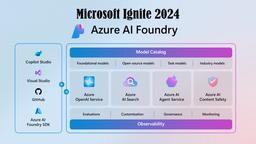The rise of AI has revolutionized the video creation industry, making it easier than ever to turn text into engaging visuals. Two of the most popular AI text-to-video tools in 2024 are PixVerse and Haiper. In this article, we'll dive deep into the features, ease of use, and output quality of these tools to help you determine which one is the best fit for your video creation needs.
What is PixVerse?
PixVerse is an AI-powered platform that allows users to generate high-quality videos from text prompts. With its advanced natural language processing algorithms, PixVerse can understand and interpret complex instructions, creating visuals that accurately represent the user's vision.
What is Haiper?
Haiper is another AI text-to-video tool that has gained significant popularity in 2024. Unlike PixVerse, Haiper focuses on creating short, social media-friendly videos that are perfect for platforms like TikTok and Instagram Reels. With its user-friendly interface and powerful AI engine, Haiper makes it easy for anyone to create engaging videos in minutes.
PixVerse vs Haiper
When it comes to AI text-to-video tools, PixVerse and Haiper have their own unique strengths and weaknesses. Let's take a closer look at how they compare:
1. Video Quality
Both PixVerse and Haiper are capable of generating high-quality videos, but they have different approaches. PixVerse uses advanced 3D rendering and animation techniques to create visuals that are both realistic and visually striking. Haiper, on the other hand, relies more on stock footage and motion graphics to create its videos, which can result in a more polished and professional look.
2. Ease of Use
In terms of ease of use, Haiper has a slight edge over PixVerse. The platform's user-friendly interface and intuitive prompts make it easy for anyone to create videos, even if they have no prior experience. PixVerse, while still relatively easy to use, requires a bit more technical knowledge and can be more time-consuming to set up.
3. Customization Options
When it comes to customization options, PixVerse is the clear winner. The platform offers a wide range of tools for adjusting everything from camera angles to lighting and color schemes. Haiper, while still allowing for some customization, is more limited in this area.
4. Output Formats
Both PixVerse and Haiper allow users to export their videos in a variety of formats, including MP4 and GIF. However, PixVerse offers a wider range of options, including support for higher resolutions and frame rates. Haiper, while still producing high-quality videos, is more focused on creating content that is optimized for social media platforms.
Which One is Better?

Ultimately, the choice between PixVerse and Haiper comes down to your specific needs and preferences. If you're looking for a powerful and customizable tool for creating high-quality videos, PixVerse is the better choice. However, if you're more interested in creating short, social media-friendly videos quickly and easily, Haiper is the way to go.
Alternatives to PixVerse and Haiper
While PixVerse and Haiper are two of the most popular AI text-to-video tools in 2024, they are not the only options available. Some other tools worth considering include:
- Synthesia: A powerful AI video generation platform that allows users to create videos in multiple languages

- Invideo: An all-in-one video creation tool that includes an AI-powered video generator

- Runway ML: A machine learning platform that can be used to create AI-generated videos

Conclusion
In conclusion, both PixVerse and Haiper are excellent AI text-to-video tools that offer unique features and benefits. Whether you choose PixVerse for its advanced customization options and high-quality output or Haiper for its ease of use and social media-friendly videos, you can't go wrong with either platform.
If you're looking for even more AI tools to help with your video creation needs, be sure to check out AIPURE at https://aipure.ai/. With a wide range of tools and resources available, AIPURE is your one-stop shop for all things AI.



